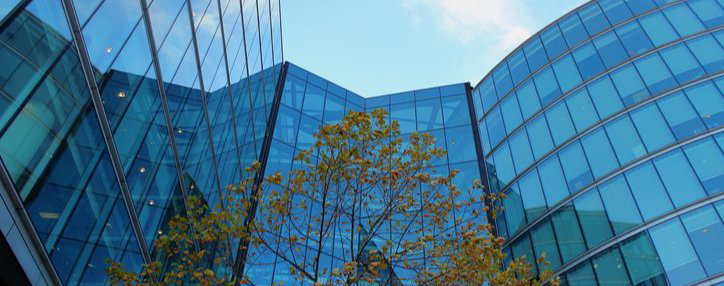Private investors acquire £1.3bn of London office assets over 12 months
Knight Frank’s latest research report on the capital’s office market has highlighted that over the last year, family offices and ultra-high-net-worth individuals have purchased £1.3bn worth of London office assets.
Such high transaction volumes by wealthy private investors have been a by-product partly of the volatility caused by rising interest rates, combined with weak sterling, less competitors and subdued capital values, providing plentiful purchasing opportunities.
The £1.3bn spend represents a 44% share of central London office investments, an increase from the long-term average (36%).
With fewer prime assets listed, wealthy buyers spent £690m over the last year on secondary stock. Also referred to as ‘brown’ buildings, these properties need capital expenditure in order to satisfy contemporary sustainability and workplace standards. The value of deals in the secondary stock market averaged £62m over the last 12 months as buyers targeted smaller lots to minimise debt.
RAAC concrete issues impact on commercial property owners
Following the recent RAAC (Reinforced Autoclaved Aerated Concrete) controversy, The Institution of Structural Engineers, has urged owners of older commercial property buildings to get their properties surveyed in order to identify or eliminate the possibility of the presence of the concrete, which is prone to collapse.
The advice urged, ‘If a building owner or manager has a building from this period and is unsure of the form of construction, they should carry out an inspection and a risk assessment. If RAAC planks are present, their structural condition will need to be determined by a Chartered or Incorporated Structural Engineer.’
The lightweight concrete, used primarily for flat roofs, was used in construction during the 1950s to mid-1990s. Although most widely used in the public sector, it was also used in commercial office buildings, factories, warehouses and shops.
Commercial buildings with RAAC are less common due to the redevelopment cycle, with commercial developers more likely to have addressed its presence during ongoing repairs, maintenance or during building upgrades.
Life science, laboratory and tech sector shows ‘exceptional rental growth’
The latest UK Commercial Market in Minutes from Savills has detailed a positive occupational story from the life science, laboratory and technology sector, with investors and developers who were ahead of the curve in terms of renewed interest in the sector, benefiting from solid letting activity and ‘exceptional rental growth.’
Investment from overseas, combined with M&A activity has driven some key deals, one prime example being Moderna’s signing of a significant pre-let at Harwell Campus, Oxfordshire, within the so-called ‘golden triangle’ of Oxford, Cambridge
and London.
It seems that a critical factor in driving future growth will be the decision regarding whether the UK will remain a partner of the European Horizon funding programme for scientific research.
Commercial property currently for sale in the UK
-
-
- London has the highest number of commercial properties for sale
- Scotland currently has 1,143 commercial properties for sale with an average asking price of £339,655
- There are currently 1,861 commercial properties for sale in London, the average asking price is £1,269,247.
-
| Region | No. properties | Avg. asking price (£) |
| London | 1,861 | 1,269,247 |
| South East England | 1,588 | 699,085 |
| East Midlands | 824 | 607,695 |
| East of England | 968 | 571,656 |
| North East England | 841 | 343,617 |
| North West England | 1,441 | 405,965 |
| South West England | 1,778 | 648,376 |
| West Midlands | 1,169 | 597,309 |
| Yorkshire and The Humber | 1,2603 | 327,412 |
| Isle of Man | 50 | 442,887 |
| Scotland | 1,143 | 339,655 |
| Wales | 894 | 441,440 |
| Northern Ireland | 4 | 24,166 |
Source: Zoopla, data extracted 19 September 2023
Commercial property outlook
Investment enquiries – broken down by sector

-
- The headline net balance for investment enquiries was -22%, marking a renewed decline following the previous quarter’s reading of -14%
- Investment demand for offices and retail assets came in at -34% for both sectors
- Industrial buyer demand is marginally negative at -2%.
Capital value expectations – broken down by sector

-
- Virtually all sectors are expected to see declines in the year to come
- Prime industrial capital value expectations are broadly flat
- Data centres, aged care facilities and student housing values are expected to prove more resilient and post modest gains over the year ahead.
Source: RICS, UK Commercial Property Market Survey, Q2 2023
Written and supplied by The Outsourced Marketing Department. All details are correct at the time of writing (20 September 2023)


